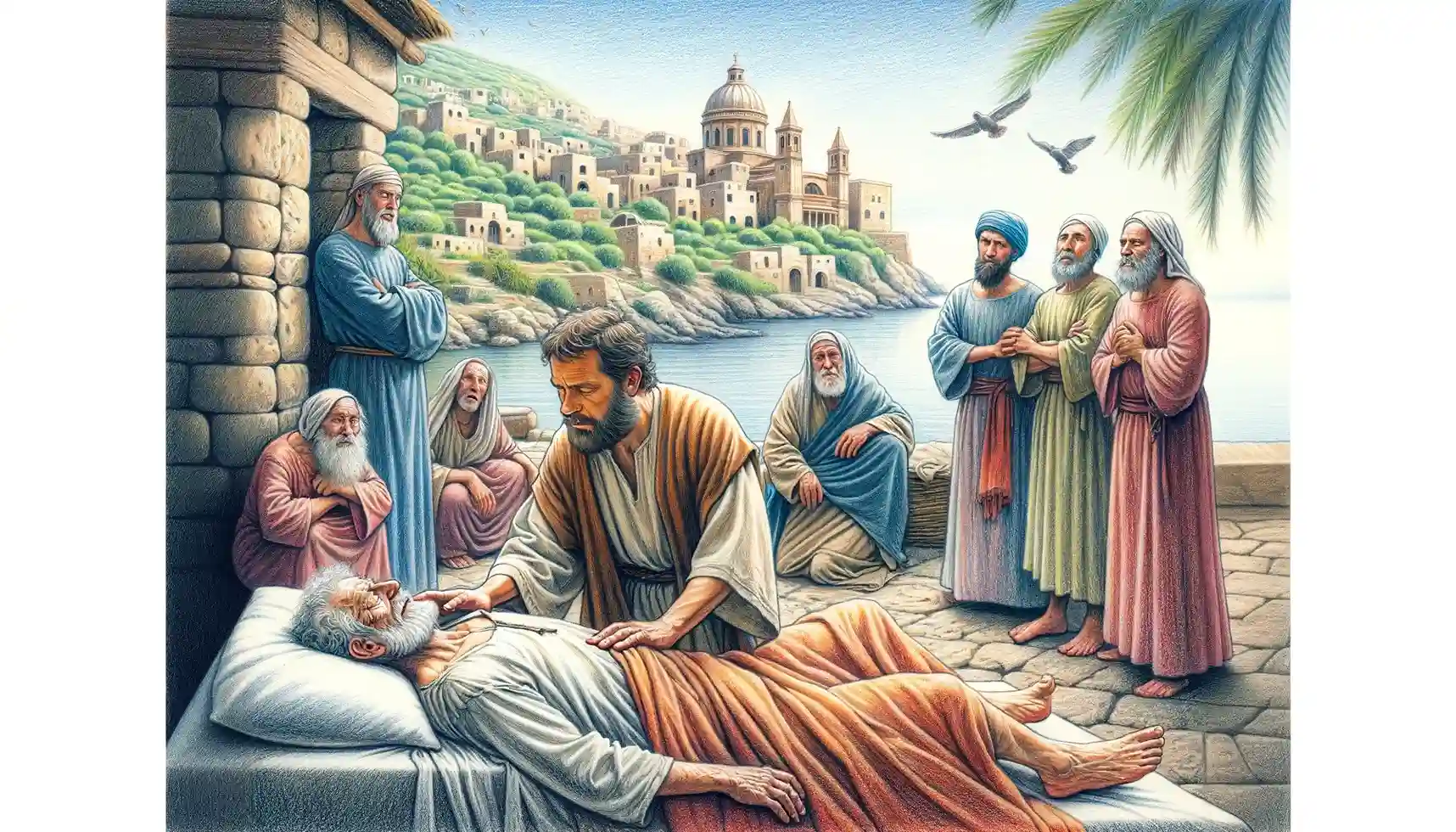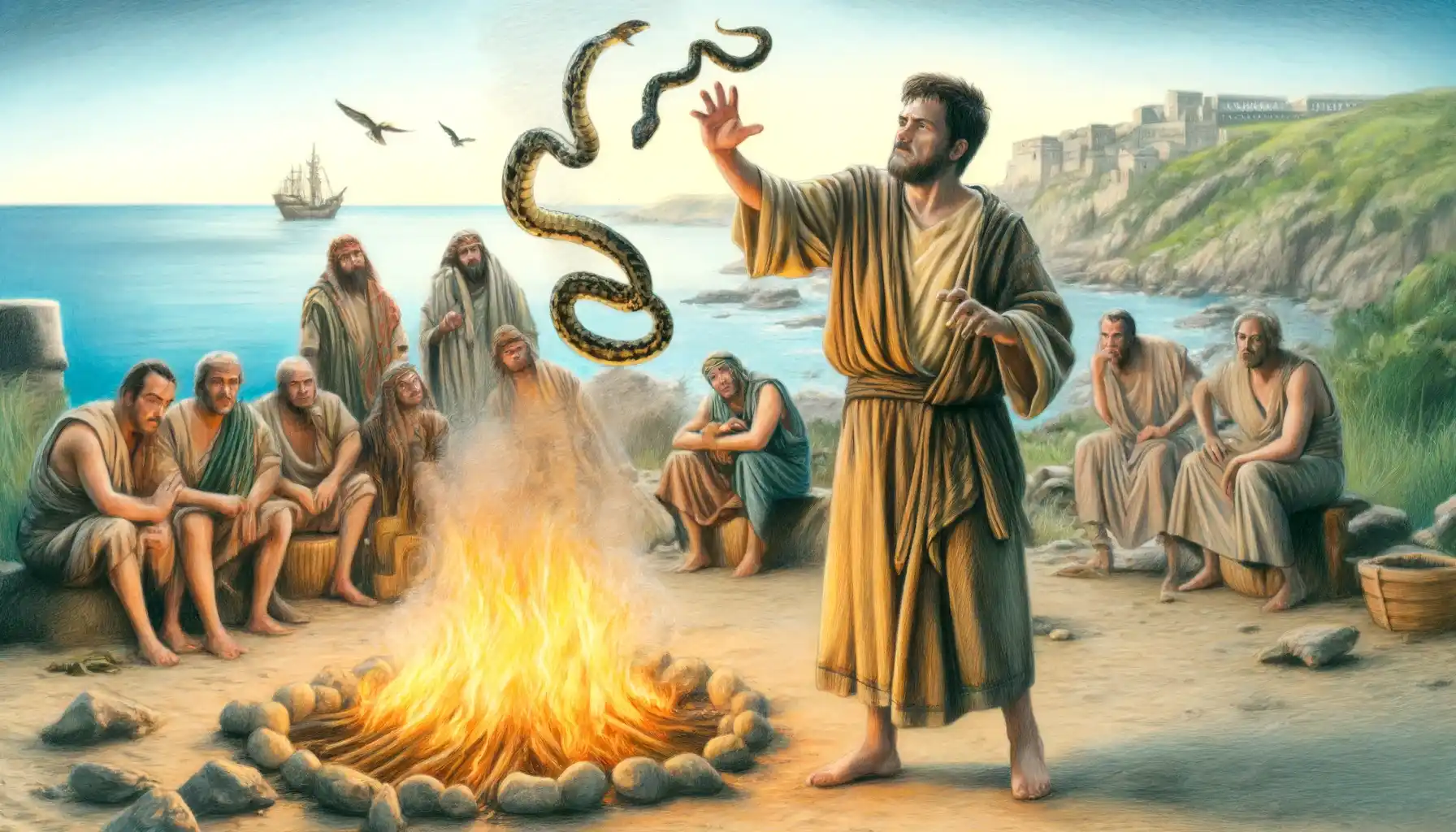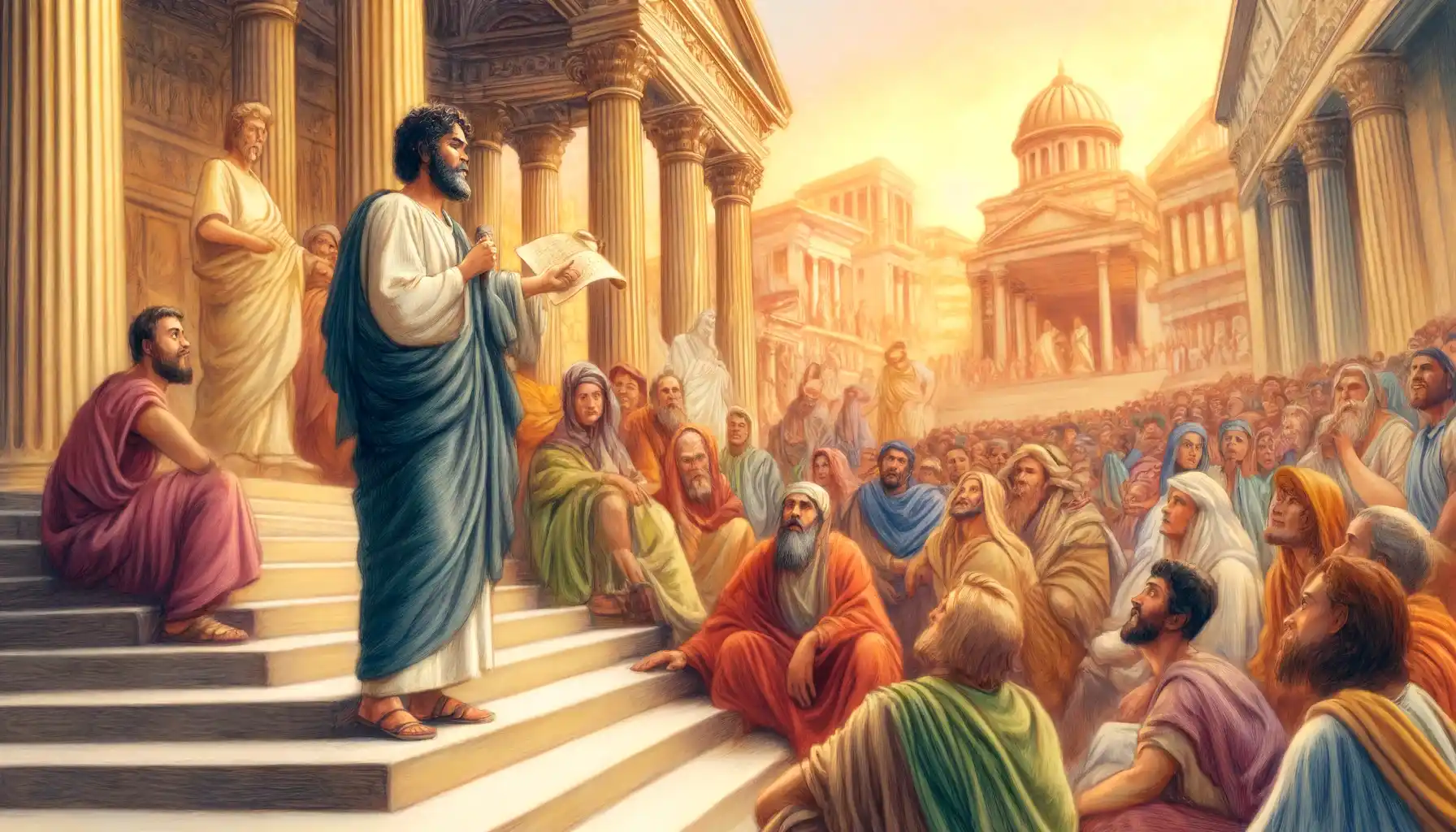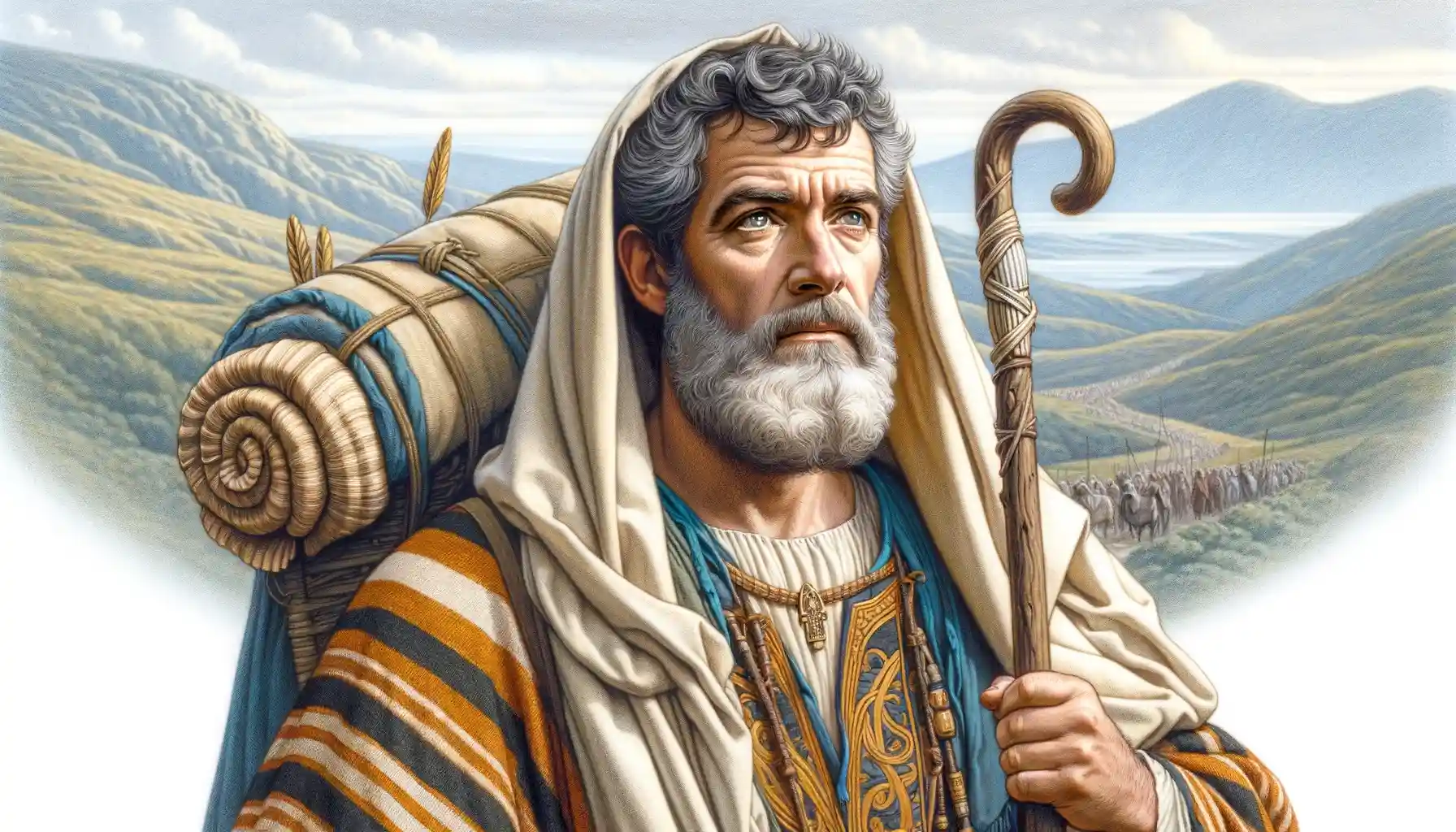In Acts 28:8-9, after surviving a shipwreck and a viper bite, Paul performs miraculous healings on the island of Malta, including curing the father of Publius, the chief official, and many other sick islanders, which leads to widespread recognition of God’s power.
In Acts 28:3-5, Paul is bitten by a viper while gathering firewood on the island of Malta, but he suffers no harm, leading the islanders to view him as under divine protection.
In Acts 9:1-19, Saul’s journey to persecute Christians in Damascus is interrupted by a divine encounter with Jesus, leading to his temporary blindness, restoration of sight through Ananias, and his subsequent conversion and baptism, transforming him into Paul, a devoted apostle of Christ.
Paul, originally known as Saul of Tarsus, was a major apostle to the Gentiles and a foundational figure in the establishment of Christianity, renowned for his dramatic conversion, extensive missionary journeys, and the authorship of many influential New Testament Epistles.
James the Less, one of the Twelve Apostles of Jesus Christ and traditionally identified as the son of Alphaeus, is known for his humility and lesser prominence compared to James the Greater, likely referred to as “the Less” due to his younger age or smaller stature.
Bartholomew, also known as Nathanael in the Gospel of John, is a biblical figure whose journey from skepticism to profound faith exemplifies the transformation experienced by those who encounter Jesus; recognized by Jesus as “an Israelite indeed, in whom there is no deceit,” Nathanael’s straightforwardness and integrity mark him as a disciple who is both honest in his doubts and sincere in his conversion. Following Jesus’ resurrection and ascension, he embarked on missionary journeys to diverse regions including India, Armenia, Ethiopia, and Southern Arabia, facing significant challenges but also contributing to the Christian tradition in these areas; his martyrdom, characterized by being flayed alive and then crucified, underscores his commitment to his faith and his willingness to endure immense suffering for his belief in the Gospel, with his legacy continuing in his veneration as a saint, celebrated on August 24th in the Western Church and June 11th in the Eastern Church, and revered as the patron saint of various professions and causes.
James the Greater, son of Zebedee and brother of John, was one of Jesus Christ’s Twelve Apostles, notable for his fervent faith and passionate devotion, which earned him and his brother the nickname “Boanerges” or “sons of thunder.” He witnessed pivotal events like the Transfiguration and the Agony in the Garden due to his status within Jesus’ inner circle. His ministry was tragically cut short when he became the first apostolic martyr, executed by the sword under King Herod Agrippa I around AD 44, highlighting the dangers faced by early Christian evangelists. Venerated as the patron saint of Spain, James’ legacy continues to inspire through the Camino de Santiago, a major pilgrimage route leading to his shrine in Santiago de Compostela, where he is symbolized by the pilgrim’s hat and scallop shell, reflecting his enduring influence as a spiritual guide and protector of pilgrims.
Peter’s life story is a powerful narrative of transformation, illustrating a journey from doubt and denial to restoration and committed leadership, resonating with themes of fallibility and redemption, and underscoring the human capacity for spiritual growth and resilience, while his legacy, as both a flawed individual and a revered apostle, continues to inspire and instruct believers on the dynamics of faith, leadership, and divine grace.








